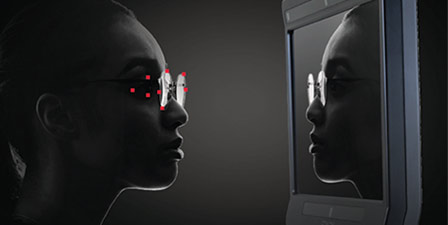
In 20/20, prism is the topic read more than any other. Due to its popularity, we feature the topic in a two-part prism CE course titled “The Many Facets of Prism in Ophthalmic Lenses” by Kai Rands and sponsored through a generous educational grant from ZEISS.
In our field, we use a prism in ophthalmic lenses to change light’s vergence or correct binocular disparities. Hence, the brain receives and can fuse equivalent images from the right and left retinae into a single focused image. But optical prisms have many uses beyond ophthalmic lenses.
Prisms of varying types are used in imaging in astronomy, telecommunications, spectroscopy and others. Dispersive prisms break visible white light into its component colors. Reflective prisms reflect light, flip, invert, rotate, deviate or displace light. Prisms can split or disperse a beam of light in digital equipment for science, technology and medical instruments. Beam-splitting prisms deposit thin film layers on the hypotenuse of one right-angled prism cemented to another, forming a beam-splitting cube.
The following is an example of dispersive prism use in the James Webb Space Telescope (JWST). According to SciTech Daily, “Single Object Slitless Spectroscopy (SOSS) is a specialized prism assembly for dispersing the light of a cosmic source to create three distinctive spectra revealing the hues of more than 2,000 infrared colors collected simultaneously in a single observation.” This specialized prism assembly is “used to probe the atmosphere of transiting exoplanets, i.e., planets that happen to eclipse their star periodically, momentarily dimming the star’s brightness for a period of time. By comparing the spectra collected during and before or after a transit event with great precision, it is possible to determine whether the exoplanet has an atmosphere and what atoms and molecules are in it.”
Since infrared is invisible to the human eye, you might wonder how the images produced by the JWST are in visible colors. JWST detects what we feel as heat, infrared (IR), just like night-vision goggles, which allows us see the heat emitted from objects in the dark. The JWST takes up to 29 greyscale images, each through a different filter tuned to transmit specific IR wavelengths. Each of the 29 images is assigned a color corresponding to visible wavelengths. The longest wavelength is red, and the shortest is blue. By combining the separate filter images, a composite color image is formed. In effect, the JWST’s images are shifted up the electromagnetic spectrum from a part we cannot see (IR) into the part we can see (optical). So, the colors in the JWST image are not real—they are not what your eye would see. They are assigned colors in a composite image that shows the variation in brightness with wavelength, making the images easier to analyze and more beautiful to see with our human vision.
• Deborah Kotob
Pro to Pro Director
[email protected]












